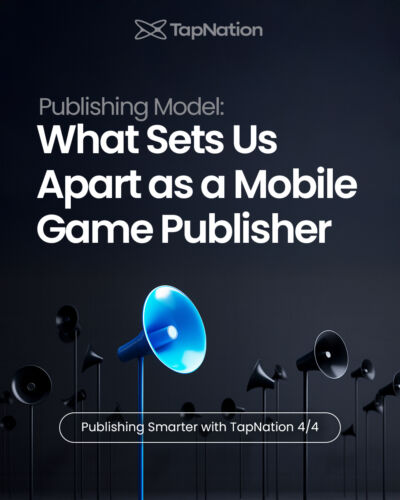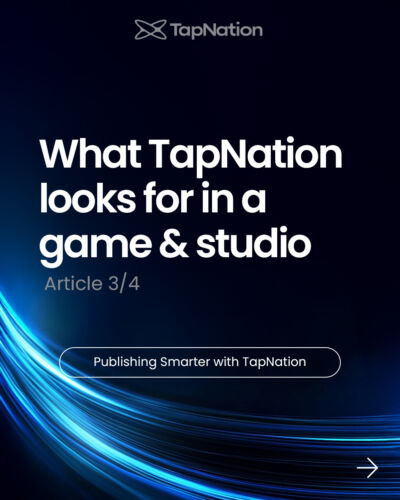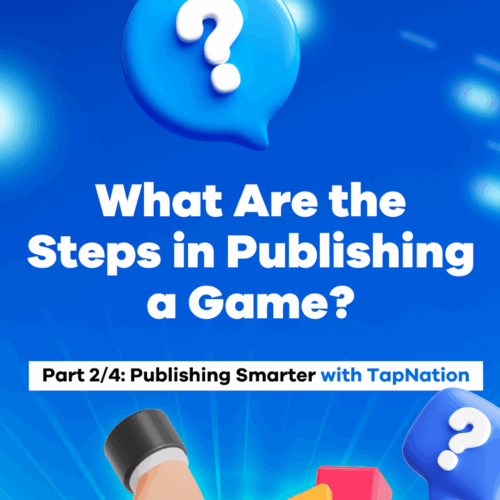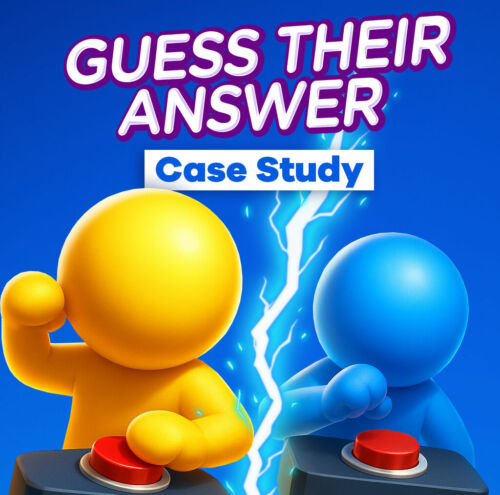Kamel Haddad, Aug 27, 2024
Introduction
The digital revolution is reshaping mobile gaming by enabling instant access to diverse content and personalized experiences. This wave is further accelerated by the rise of AI. Artificial Intelligence (AI) is reshaping industries across the globe. At TapNation, we’re leveraging its potential to drive innovation and elevate mobile gaming experiences. But what exactly is AI? In essence, AI is a field within computer science that focuses on building systems capable of performing tasks that would typically require human intelligence. These tasks can range from reasoning, learning, and problem-solving to understanding language, perception, and beyond.
Many of us have turned to AI tools like ChatGPT for crafting emails or content and Midjourney for generating stunning visuals. These tools are prime examples of how AI technology mimics human-like tasks, heavily relying on deep learning and natural language processing (NLP).
AI consists of several specialized subfields, each with its own methodologies and uses, including Machine Learning (ML), Deep Learning (DL), Natural Language Processing (NLP), Computer Vision, and Generative AI (GenAI).
Types Of AI And Its Core Components:
- Machine Learning (ML) is a key area of AI where algorithms are trained to learn from data and make predictions or decisions without needing explicit programming. ML comes in three main forms:
- Supervised Learning: In this approach, algorithms learn from labeled datasets, mapping inputs to specific outputs. For example, email spam detection (classification) and predicting house prices (regression) are common applications.
- Unsupervised Learning: Here, algorithms analyze unlabeled data to uncover hidden patterns or underlying structures. Common examples include customer segmentation (clustering) and market basket analysis (association).
- Reinforcement Learning: In this type, algorithms learn by interacting with an environment, receiving feedback in the form of rewards or penalties, and gradually developing strategies to maximize rewards. This is often seen in game-playing AI like AlphaGo and in autonomous vehicles.
2. Deep Learning (DL), a more specialized branch of ML, employs neural networks with multiple layers (hence “deep”) to process and interpret vast amounts of data, especially unstructured data like images, audio, and text.
Key types of DL include:
- Convolutional Neural Networks (CNNs): Widely used for image recognition tasks, such as object detection and facial recognition.
- Recurrent Neural Networks (RNNs): Well-suited for handling sequential data, such as stock price prediction and language translation.
Generative Adversarial Networks (GANs): These networks create realistic synthetic data, which can be used for generating images of non-existent people or crafting new artistic creations.
Natural Language Processing (NLP)
NLP is focused on the interaction between computers and human languages, enabling machines to understand, interpret, and respond to text and speech. Key applications include:
- Text Classification: Categorizing text into predefined categories, such as filtering spam emails or analyzing sentiment.
- Machine Translation: Converting text from one language to another, exemplified by services like Google Translate.
Conversational Agents: Creating systems that can hold a conversation with humans, such as chatbots and virtual assistants like Siri or Alexa.
Computer Vision
Computer vision enables machines to understand and make decisions based on visual input. It combines techniques from image processing, pattern recognition, and ML/DL. Applications include:
- Object Detection: Identifying and locating objects within images or videos, such as pedestrians in autonomous vehicle systems.
- Image Segmentation: Dividing an image into different segments, which is useful in fields like medical imaging for identifying tumors.
Facial Recognition: Identifying or verifying individuals based on their facial features, commonly used in security systems and social media.
Generative AI (GenAI)
Generative AI systems are capable of creating new content—like text, images, or music—by using extensive datasets and sophisticated algorithms. They generate outputs that resemble the data they were trained on.
Examples include:
- Language Models: GPT (Generative Pre-trained Transformer), used for generating text like articles or emails.
- Image Generation Models: Tools like DALL-E, which creates images based on text descriptions, and StyleGAN, which can generate realistic human faces,.
The impact of generative AI in different industries has been profound, and the mobile gaming industry is no exception. By leveraging this technology, developers can employ vast and diverse game environments without the need for extensive manual labor.
Generative AI has redefined game design and created endless possibilities for creativity and enhanced player engagement. More particularly, it is revolutionizing the way content is generated, from levels and characters to mobile gaming design and visual assets.
AI Integration in mobile gaming at TapNation
Marketing Optimization
We use AI to refine our mobile gaming marketing strategies, employing methods like time series forecasting, regression analysis, Thompson sampling, and Monte Carlo simulations. This allows us to fine-tune our campaigns, measure organic growth, predict lifetime value (LTV). It also helps make data-driven decisions to achieve our marketing objectives.
Creative Optimization
AI plays a crucial role in enhancing our creative processes, from optimizing app store presentations to refining product design. By utilizing machine learning to gain creative insights, we can offer valuable recommendations on how our current creative assets are performing. Combining ML with computer vision, we derive actionable insights that help us improve our creative outputs and make informed decisions.
How can AI be used in mobile gaming?
Integration of Generative AI and their applications
1. Code Companion
- One application of Generative AI at TapNation is to embed a companion while programming, using the developer’s usual editor by integrating Github CoPilot.
GitHub Copilot is designed to assist software developers by providing code completion, suggestions, and more, making the coding process faster and more efficient. It leverages OpenAI’s advanced language model, GPT-3, to offer context-aware code snippets and recommendations in real time. Here are some key features and functionalities of GitHub Copilot:
- Key Features of GitHub Copilot
Code Completion
Auto-Suggestions: As developers write code, Copilot suggests entire lines or blocks of code, helping them complete statements faster.
Context-Aware: The suggestions are based on the context of the current file and the surrounding code, aiming to provide relevant and accurate recommendations.
- Function and Code Block Generation
Complete Functions: Copilot can generate entire functions from just a comment or a brief prompt, saving developers time on boilerplate code.
Code Snippets: It can provide snippets for common programming tasks or specific algorithms.
- Multi-Language Support
Versatile: Supports a variety of programming languages, including JavaScript, Python, TypeScript, Ruby, and more.
Adaptability: It can switch between languages and adapt to the syntax and conventions of each language.
- Learning from Open Source
Training Data: GitHub Copilot is trained on a massive dataset of publicly available code from GitHub repositories, enabling it to understand and generate a wide range of code patterns and practices.
- Documentation and Comment Completion
Doc Writing: It helps in writing documentation by suggesting comments and docstrings for functions and classes.
Inline Comments: Assists in making code more readable by offering suggestions for inline comments.
- Error and Bug Detection
Debugging Aid: By suggesting corrections and improvements, Copilot can help identify potential bugs or syntax errors.
2. Text to Image
- One capability of generative AI is to build content from scratch, in this case based on human text input. It can be really useful to save time for artists within a gaming company to generate assets on the fly, assuming the user already has some knowledge of how to design a prompt accurate enough to end up with the expected output.
Example: “Create a logo or my shoe brand”

Example: “3D rendered isometric haunted mansion with ghostly apparitions, flickering candlelight, and creaking floorboards”

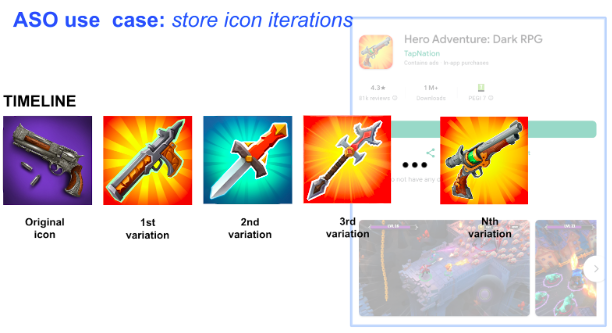
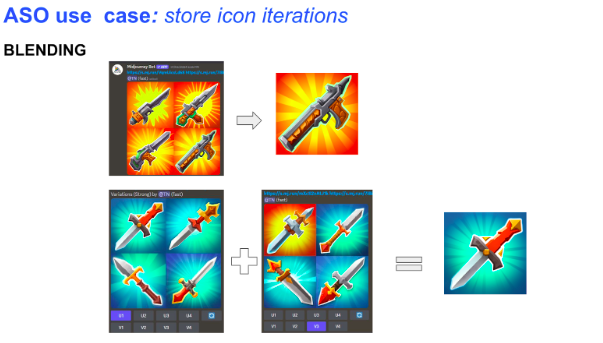
3. Text Localization
- An important aspect of the company’s ASO strategy is to localize store pages to improve players attention and conversion rate, as well as labels within mobile games.
Use case:
Application: ”Guess Their Answer”
“Prompt”: “Translate the following text in FR, US, ID, IN: List 5 yellow fruits” - Output:
Here is the translation of “List 5 yellow fruits” in various languages:
– French (FR): Liste 5 fruits jaunes
– Spanish (US): Enumera 5 frutas amarillas
– Indonesian (ID): Sebutkan 5 buah berwarna kuning
– Hindi (IN): 5 पीले फलों की सूची बनाएं (5 peele phalon ki soochi banaen)
5. Text to code
- In addition to adding pieces of code dynamically on the fly within the developer’s editor, the generative AI can also generate code from text input, the same way it would for creating graphic assets.
It can apply to a variety of verticals: data engineering, software engineering, etc
Example: “Generate a NodeJS script that scraps articles from ouest-france.fr news website”
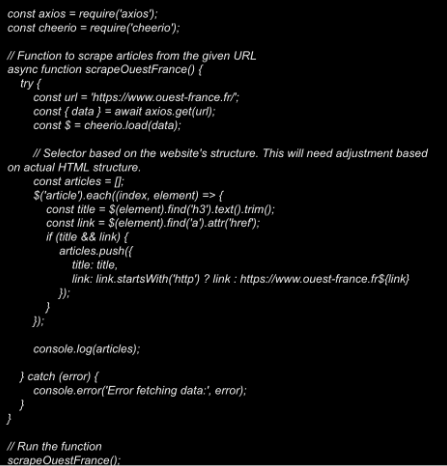
“Generate a SQL query to fetch all the players from US country within users_acttivity database table”

5. Text to game pitch
- An ongoing experimental R&D project very specific to the gaming industry is to get a bot capable of thinking by itself to generate ideas for mobile games based on top charts game knowledge bases that dynamically feed from market trends.
- This experimentation uses the Large Language Models (an AI technology mixing artificial neural networks and natural language processing) technology.
- This can be very useful to enhance product teams creativity and ideation while being consistent versus the actual company’s business.
6. Pitch Ideator
Using AI, we can significantly enhance the product teams’ creativity to help them come up with fresh and innovative game concepts. For pitch ideation, we can start with with a specific prompt for concept generation. An example could be, ‘Pitch me a card board mobile game concept based on your knowledge base, portrait oriented, level based’. Then comes the pitch, which includes defining the art style of the game, the mechanics, gameplay, title, game visuals and reference titles.
7. Customer Support
- Generative AI can also be used in the context of customer support through a chat bot system, fed by LLM models to dynamically ingest any kind of documentation (text files, MD files, PDFs, excel sheets, databases, etc.) Such a bot can be very flexible and offers the ability to output a human-readable, enriched response based on its knowledge base.
- In our case, such a bot is integrated within our messaging system (Slack) to interact with our studios to help them integrate our SDK and solve common issues by themselves instead of waiting for engineers’ support through back and forths.
“What is the latest FG SDK version and what are the main changes?”
“To integrate audio ads within your game, you first need to import the FGAudioAds.unitypackage provided by the team. Then, drag the FGAudioAds prefab into your starting screen. This prefab can be found in the Assets > FunGames > Monetization > Ads > AudioAds folder.
You can use the following functions to play an audio ad:
– FGAudioAds.PlaySkippableAd(bool withLogo, float skipCountdown);
– FGAudioAds.PlayRewardedAd(bool withLogo);
You can also subscribe to these callbacks to perform custom actions when an ad is played or when it is completed:
– FGAudioAds.OnSkippableStarted;
– FGAudioAds.OnRewardedStarted;
– FGAudioAds.OnSkippableCompleted;
– FGAudioAds.OnRewardedCompleted;
To optimize audio impressions, you can use an AudioMixer. This works in conjunction with the FGAudioAds prefab to mute all other game audios while an ad is playing. You can bind your existing AudioSources with the AudioAdsMixer by changing their output to ‘OtherGameAudio’. You can also use your own AudioMixerController but make sure you set up 2 snapshots: one for Normal Mode, and one with all your game audios muted.”
Conclusion
The digital revolution is reshaping mobile gaming, driving rapid innovation and accessibility, with AI at the forefront of this transformation. At TapNation, AI is more than just a tool—it’s a cornerstone of our innovation and growth strategy. By integrating AI into our processes—from marketing and creative optimization to generative AI applications—we’re constantly pushing the limits of what’s possible in the mobile gaming industry.
Stay tuned as we continue to explore new AI-driven opportunities and reshape the future of mobile gaming through AI.
Want to join in this revolutionary wave of new technologies? We’re hiring!



